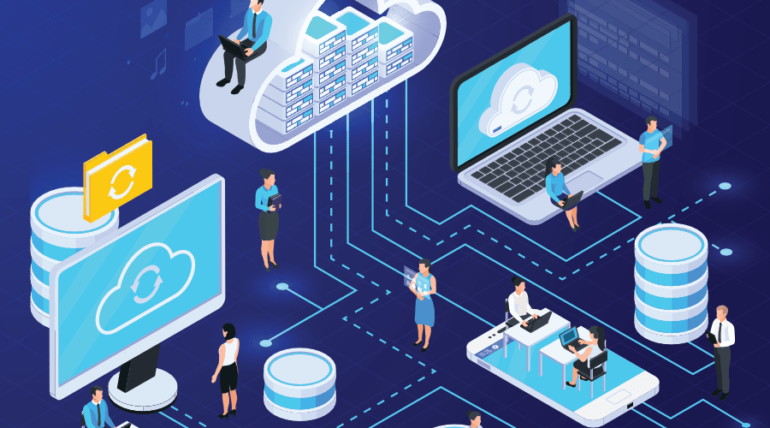
Cloud computing is the on-demand availability of virtual computer, especially data storage and computing power, without direct active management by the user. Cloud providers typically use a “pay-as-you-go” model, which can lead to unexpected operating expenses if administrators are not familiarized with cloud-pricing models.
BENEFITS OF CLOUD
1. Cost
Cloud computing eliminates the capital expense of buying hardware and software and setting up and running on-site datacenters. the racks of servers, the round-the-clock electricity for power and cooling.
2. Global scale
The benefits of cloud computing services include the ability to scale elastically. In cloud speak, that means delivering the right amount of virtual hardware resources.
3. Performance
The biggest cloud computing services run on a worldwide network of secure datacenters, which are regularly upgraded to the newest generation of fast and efficient computing hardware. This offers several benefits over one corporate data-center, including reduced network latency for applications and greater economies of scale.
4. Reliability
Cloud computing makes data backup, disaster recovery and business continuity easier and less expensive because data can be mirrored at multiple redundant sites on the cloud provider’s network.
5. Security
Many cloud providers offer a broad set of policies, technologies and controls that strengthen your security posture overall, helping protect your data, apps and infrastructure from potential threats.
TYPES OF CLOUD COMPUTING
In present time there are on three type of cloud available in the market i.e. Private, Public, Hybrid.
1. Private Cloud
A private cloud refers to cloud computing resources used exclusively by a one business or organisation. A private cloud can be physically located on the company’s on-site data-center. Some companies also pay third-party service providers to host their private cloud.
2. Public Cloud
Public clouds are owned and operated by a third-party cloud service provider, which deliver their computing resources like servers and storage over the Internet. With a public cloud, all hardware, software and other supporting infrastructure is owned and managed by the cloud provider.
3. Hybrid Cloud
Hybrid clouds combine public and private clouds, bound together by technology that allows data and applications to be shared between them. By allowing data and applications to move between private and public clouds, a hybrid cloud gives your business greater flexibility, more deployment options and helps optimise your existing infrastructure, security and compliance.
TYPES OF CLOUD SERVICES
As of now Companies offer different kind of cloud services asper client need i.e. IaaS, PaaS, serverless, SaaS.
1. Infrastructure as a Service (IaaS)
The most basic category of cloud computing services. With IaaS, you rent IT infrastructure servers and virtual machines, storage, networks, operating systems from a cloud provider on a pay-as-you-go basis.
2. Platform as a Service
Platform as a service refers to cloud computing services that supply an on-demand environment for developing, testing, delivering and managing software applications. PaaS is designed to make it easier for developers to quickly create web or mobile apps, without worrying about setting up or managing the underlying infrastructure of servers.
3. Serverless computing
Overlapping with PaaS, serverless computing focuses on building app functionality without spending time continually managing the servers and infrastructure required to do so. The cloud provider handles the setup, capacity planning and server management for you. Serverless architectures are highly scalable and event-driven, only using resources when a specific function or trigger occurs.
4. Software as a Service (SaaS)
Software as a service is a method for delivering software applications over the Internet, on-demand, and typically on a subscription basis. Users connect to the application over the Internet, usually with a web browser on their phone, tablet or PC.
USES OF CLOUD COMPUTING
1. Create Cloud-native applications: Quickly build, deploy and scale applications.
2. Test and build applications: Reduce application development cost and time.
3. Store, backup and recover data: Protect your data more cost-efficiently and at massive scale.
4. Analyse data: Unify your data across teams, division and locations in the cloud and use ML and AI to uncover insight.
5.Stream audio and video: Connect with your audience anywhere, anytime, on any device with HD video and audio with global distribution.
6. Embed Intelligence: Use Intelligent models to help engage customer and provide valuable insights from the data
Deliver software on demand: Also known as SaaS, on-demand software lets you offer the latest software version and update around customer.
